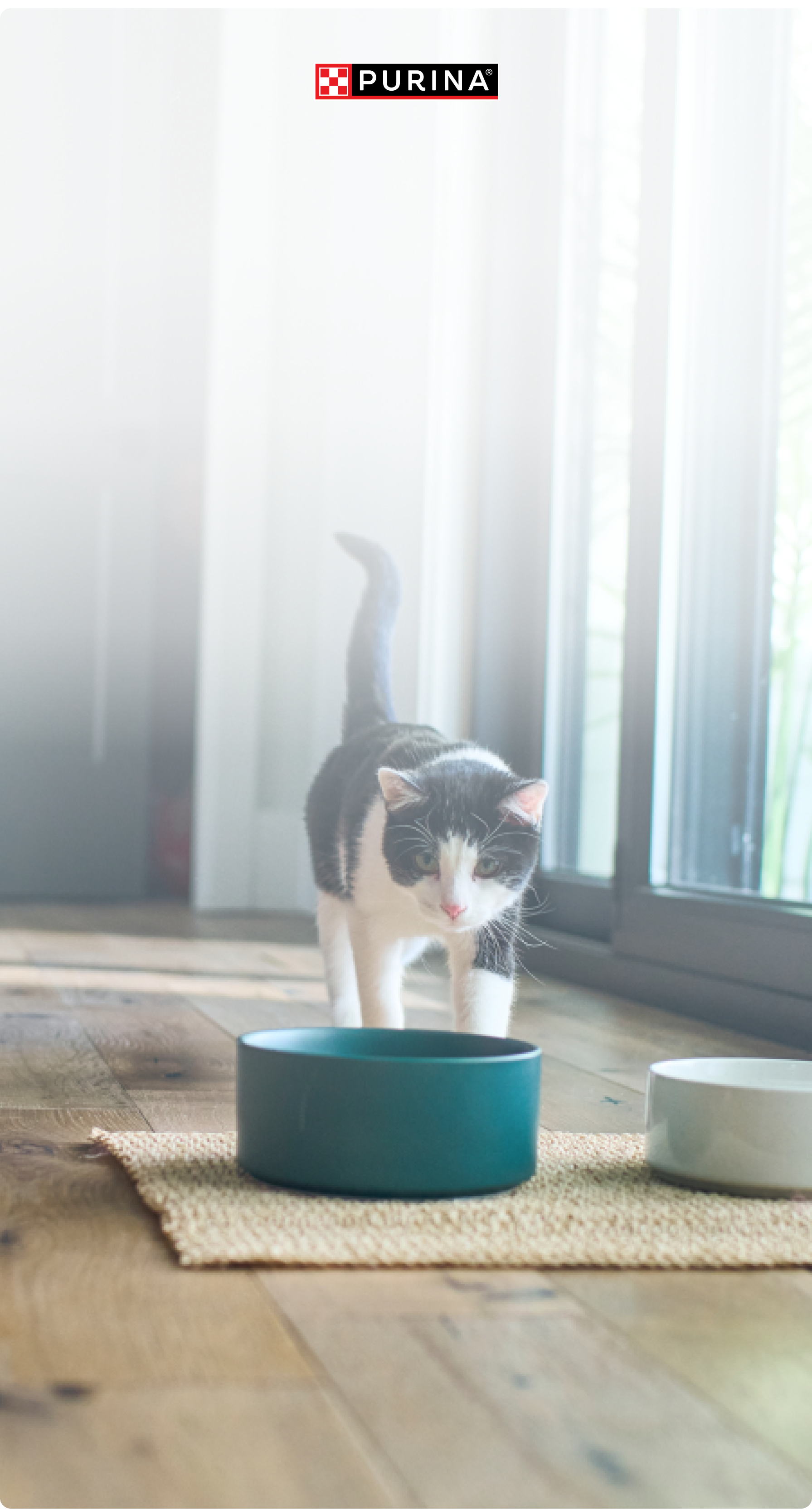Siamese

- Size:Medium, with males weighing 11 to 15 pounds and females weighing 8 to 12 pounds
- Coat:Short, fine, glossy
- Color:Seal point, chocolate point, blue point, lilac point
Siamese Cats are incredibly social, intelligent and vocal—they’ll talk to anyone who wants to listen, and even those who don’t. They also play well with other cats, dogs and children. In fact, they thrive on companionship, so it’s a good idea to get them a playmate to interact with throughout the day. Although they’re active and curious, they also love curling up on their human’s lap or snuggling up next to them in bed.
Temperament
This highly intelligent feline will seek out things to occupy her mind. So if you don’t want your cat getting into mischief, give her puzzle feeders, games and more to keep her entertained.
Characteristics
Their point coloring isn’t the only distinguishing feature of Siamese Cats. They also have a distinct, wedge-shaped head with large, triangular ears. The Siamese have a long and slim physique, with longer hind legs and a long, thin tail. Perhaps their most stunning feature is their deep blue eyes, which are almond-shaped and slightly slanted.
Lifespan
11 to 15 years
Colors
Their distinct coloration makes Siamese Cats easily recognizable. Their point coloring, meaning their ears, feet and tails are darker than their body, can range from brown to chocolate to a blue gray and even lilac. Other point color variations include tabby and other patterns. The body is light in color and usually appears as ivory, cream and even glacial white.
Shedding
With a short and soft coat, you won’t notice as much shedding with a Siamese as you would with other breeds. To maintain a healthy shine, comb her coat weekly.
Health
Their unique head shape may increase your Siamese Cat’s risk of respiratory illnesses and periodontal disease. Some may have physical deformities, such as crossed eyes or a kinked tail, but these do not require medical attention. Later in life, they may develop other visual problems like retinal atrophy or glaucoma, in addition to heart problems and bladder stones.
Choosing the Best Food for Siamese Cats
The Siamese’s triangular head and jaw means they’re prone to swallowing dry cat food whole, rather than chewing it. Because chewing dry food aids in keeping the teeth clean and reducing the buildup of plaque and tartar, it’s important to select cat food in a size and shape that forces them to chew their food before swallowing.
Dry cat foods such as Purina Cat Chow, Purina ONE and Purina Pro Plan will help clean your Siamese Cat’s teeth.
To explore other products for your Siamese, see our Product Selector.
Choosing the Best Food for Siamese Kittens
Siamese kittens need food specially formulated for their growth and development. A complete and balanced dry food like Purina Kitten Chow Nurture, Purina ONE Healthy Kitten and Purina Pro Plan Kitten Chicken & Rice Formula will provide her with the nutrients she needs.
History
The Siamese Cat originated in Siam (now Thailand) and was not exported until the late 19th century. In 1878, U.S. President Rutherford B. Hayes and his wife received one of these exotic felines as a gift. In 1906, she was officially recognized as a breed by the Cat Fanciers Association (CFA). The Siamese has contributed to the creation of several other breeds, including Himalayan, Burmese, Balinese and more.
Facts
- The Siamese was one of the original breeds of pedigreed cats.
- It was believed that when a member of the royal family in Siam died, the Siamese Cat received their soul. The cat was then moved to a temple, where she lived the rest of her life in luxury.
- Siamese Cats have been featured in popular films like The Aristocats and Lady and the Tramp.
Best Cat product for Siamese

Find Your Cat’s Perfect Food
Make mealtime magic with custom food recommendations. Just for your pet.


